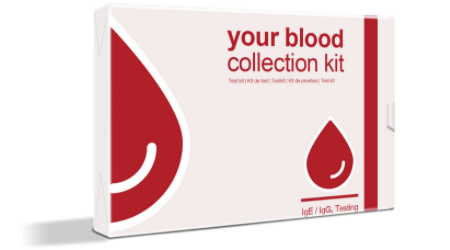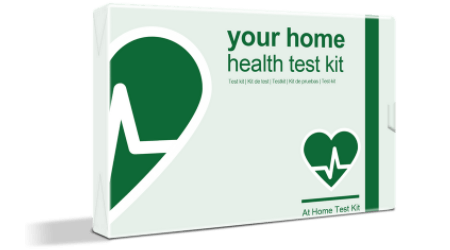The science behind IgG4 & IgE Combined
The Alergy & Intolerance Test & Alergy & Intolerance Test Plus offers both immunological and non-immunological responses, giving you a full overview of your body and the more specific reactions caused when you are fighting foreign substances via antigens.
In the last few decades, scientists have been examining the relation between abnormal nutritional reactions and health issues which has gain a lot of interest. (1, 2) The prevalence of IgE mediated allergy food reactions appears to be on the rise, and it’s estimated that food intolerance effects about 60% of the population (3).
Abnormal reactions to IgE food antigens can be classified as immune mediated with the clinical manifestations of anaphylactic reactions. Non-IgE mediated symptoms can include atopic dermatitis, enterocolitis, oesophagitis. (4-5)
IgE antibodies are involved in Type I (or Type 1) allergies and they can cause rapid type immune reactions, with symptoms occurring within few minutes to two hours after eating a specific food, while IgG antibodies are responsible for delayed immune reaction in food known as Type III (or Type 3) allergies with symptoms occurring within few hours to few days.
Both immune mediated and non-immune mediated reactions are involved in food intolerance development. The immune mechanism involved in food intolerance is associated with the formation of specific IgG antibodies. IgG antibodies are involved in the formation and accumulation in various organs of food protein complexes, resulting in inflammatory processes (6-7). In scientific literature, it is reported that 50% of patients effected by chronic diseases may possess IgG delayed mediated food intolerances (aka Type III or Type 3) (8).
IgE and IgG4 Combined Science
Both IgE and IgG antibodies are in closed proximity on the chromosome 14 and they are read in sequence. Their production depends on the presence of Interleukins (ILs). In fact when IL4 is released, it can be assumed that an IgE (Type I or Type 1 allergy) response will occur, with an immediate food reaction (9-10). The activation of an inflammatory reaction in terms of the IgE mediated response is due to the release of histamine compounds. The compounds come from the mast cells after the binding of an IgE antibody to the mast cell receptor as response to the antigen attack. Antigen include all those external agents that can be recognised as foreign and activate an immune response.
In case of sensitisation when IL10 is present, mainly production of IgG4 antibodies will be involved (9), while if other interleukins are synthesised IgG1, IgG2, IgG3 are mainly produced. The production of IgG1, IgG2, IgG3 antibodies when a specific food is consumed activates the formation of immune complexes with deposition in the body wherever the problem is (11). Unfortunately, there is a lack of scientific studies showing evidence that the deposition of immune complexes on tissues are connected to specific symptoms, which make the test of IgG1, IgG2, IgG3 antibodies not attractive from an Intolerance testing point of view. On the contrary it was demonstrated that those antibodies are playing a role in the identification of allergic reaction of non-specific systemic reactions in which inflammatory processes play a major role (12)
Why combining IgG4 and Ige is best?
With the Allergy & Intolerance Test & Allergy & Intolerance Test Plus tests from Allergy Test Australia, you have the possibility to test for IgE and IgG4 antibodies at the same time. Testing for IgE and IgG4 antibodies gives the opportunity to test for, not only the immediate allergic reactions associated with an immune response (IgE), but also to those reactions that are not IgE mediated. These can still cause you symptoms as bloating, headaches, stomach cramps, diarrhoea.
The IgG4 antibodies are known to be the blocking antibodies preventing the release of histamine factors and the activation of immediate allergic reaction (Type I or Type 1 allergy). IgG4 antibodies can influence an immune response but not activate that directly. Our Allergy & Intolerance Test Plus can help you to have a better overview of the specific immune response reactions in the presence of specific allergens. In this way we will be able to draw you a map of the reactions that you can take with you, to start your journey to find a better version of yourself.
Our tests are developed for the identification of specific IgE mediated allergies and IgG4 antibodies reactions. Unfortunately, there are also no IgE mediated allergic reactions and our tests are not able to detect those allergies. IgG4 antibodies are only used for the identification of intolerances and not allergies.
Is IgE and IgG4 Testing still what you’re looking for? Then check them out Allergy & Intolerance Test and Allergy & Intolerance Test Plus
References
5) Waserman S, Watson W, Food allergy. Allergy Asthma Clin Immunol 2011; 7 (1): S7.
6) Sampson HA, Anaphylaxis: persistent enigma. Emerg Med Australas. 2006; 18: 101-2



